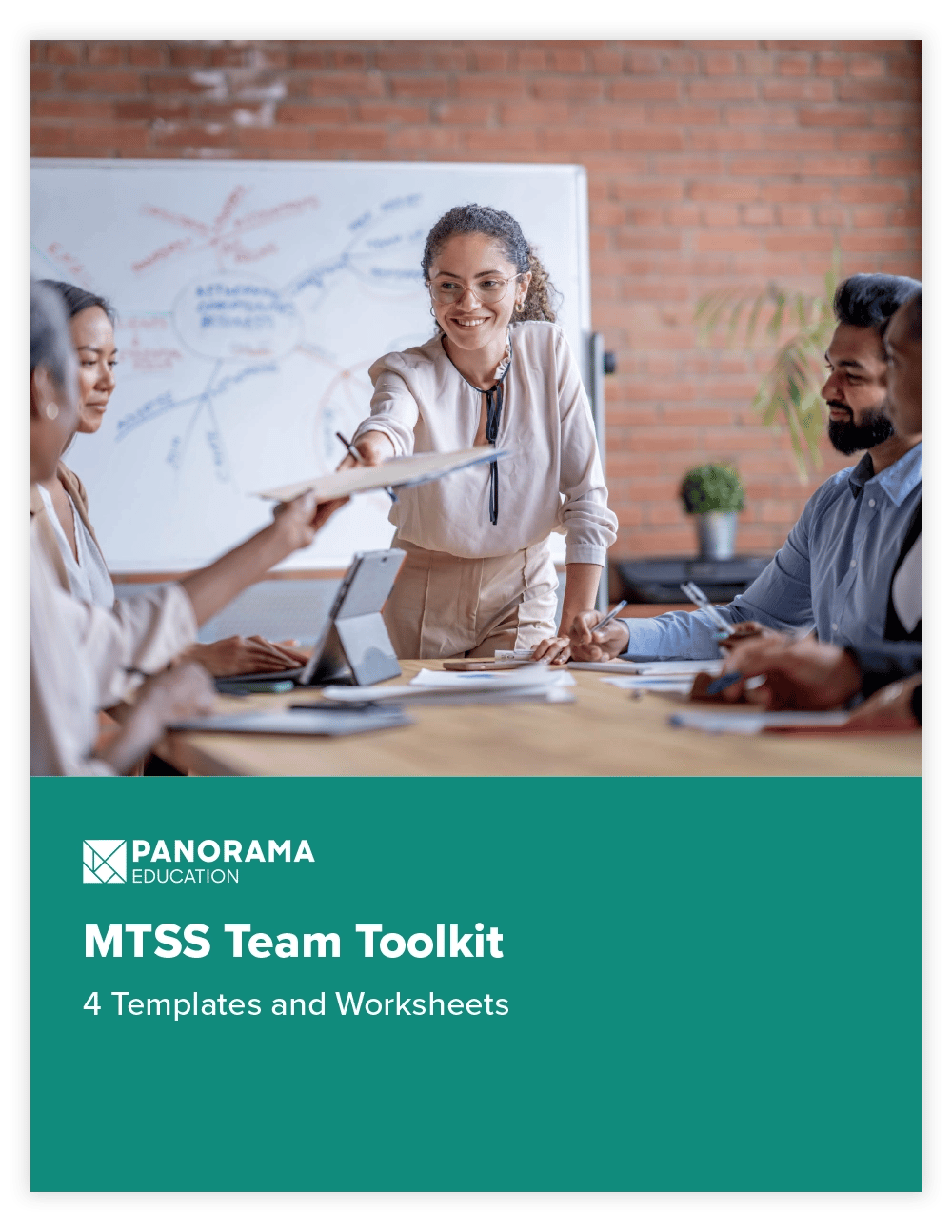Implementing a successful multi-tiered system of supports (MTSS) requires work from administrators, classroom educators, support staff, family members, and other caring adults to ensure that every student is getting the support they need.
Districts rely on several MTSS teaming structures to lead work at the district, school, and student-facing levels. But what are these different teams? Who should be a part of them? And what do their meetings look like?
In this post, we’ll dig into MTSS teams and meeting structures, including:
- Types of MTSS teams
- Roles and responsibilities of team members
- Best practices for running MTSS meetings
-
Making time for team meetings
Watch the video below to learn all about setting up the culture and infrastructure to make a tiered system of supports work.
Download our toolkit of resources for MTSS Teams.
Who Should Be Involved in MTSS Teams?
Everyone in your community has a role to play in a successful MTSS: administrators, teachers, students, and families. Each voice matters and can add invaluable insight to your practices and processes.
When building your MTSS teams, be considerate of having a diversity of voices and perspectives. These can vary from team to team. Here are some examples:
- A district-level team should be made up of administrators, MTSS leaders, classroom educators, support staff, as well as family and community partners. You may even consider including student representatives. These teams look at the overall health of the district’s MTSS as well as district-wide Tier 1 supports.
- A school-wide team should include the principal, general education teachers, special education teachers, content specialists, student support personnel, and the school MTSS coordinator.
- A student-facing team is typically composed of educators, counselors, administrators, and other specialists. These teams develop intervention plans for students needing extra support.
What Happens During an MTSS Meeting?
Each type of MTSS team has its own scope, but they all seek to solve problems with data-based decision-making. Whether a team is looking to support students at the individual, group, school, or district level, they do some version of the following work:
- Data collection and analysis
- Making decisions and developing action plans
- Monitoring progress of intervention plan implementation
- Discussing wins and concerns
Time management is a major pain point for MTSS teams. With a lot to do within a limited amount of time, efficiency is key. Ideally, educators should spend most of these meetings taking action on data, evaluating MTSS intervention strategies, and generating intervention plans in order to ensure students get the support they need. Using a consistent agenda with clear action items and a timetable will ensure meetings run smoothly. Download a sample agenda in the MTSS Team Toolkit.
When Should You Have MTSS Meetings?
The frequency of MTSS meetings depends on what type of meeting you’re having. District or school-wide teams may only need to meet three or four times during the school year, as they are considering larger sets of data. Student-facing teams, however, will need to meet more frequently, around every four to six weeks. This will give interventions time to take hold, but still allow time to change course if needed.
Ultimately, the choice should be up to your teams and what makes the most sense for them and their work. Some good guidance is to make sure that meetings aren’t happening so often that there are no updates, but not so infrequently that students are falling through the cracks.
Another question is how to make time for these meetings in a busy school schedule. We encourage you to think creatively about schedules and find what works best for your teams. Here are some ideas to consider:
- Build MTSS meetings into existing structures so it doesn’t feel like something extra for educators.
- Include half-days in the schedule for teams to do data dives while students aren’t in the building.
- Set aside Student Support Team (SST) weeks where special subject blocks are doubled, giving grade-level teams and support staff extra time to meet to discuss intervention plans.
Next Steps for Your MTSS Teams
MTSS teams are a vital part of a successful support system. Here are some of the key things to consider when building team processes and practices:
- A comprehensive MTSS will have multiple teams working at different levels: district, school, and student-facing.
- Teams should have a diversity of roles and perspectives, including families and students when applicable.
- Teams should develop clear agendas and expectations to keep things running smoothly and within set meeting times.
- Keep consistent and reasonable schedules for team meetings, and work creatively to include meeting time within your existing school calendar.
No matter what the focus is for your MTSS team, you need to have access to clear and actionable data. This will not only ensure you’re making the best decisions to support students but also saving valuable meeting time. With the right systems in place, team members should only need to spend two to five minutes per meeting on data analysis—leaving the majority of time for planning interventions.
Access resources, worksheets, and templates in the MTSS Team Toolkit.


.jpeg)




